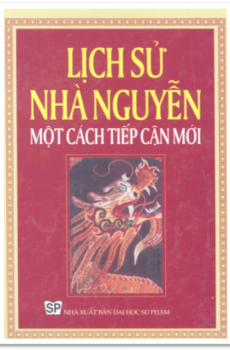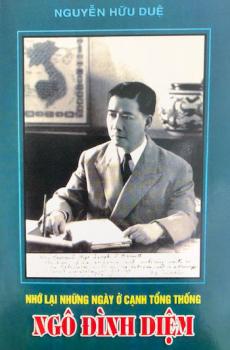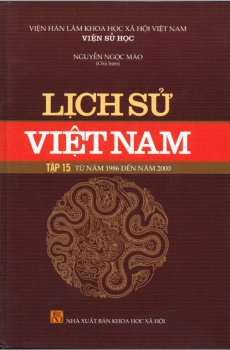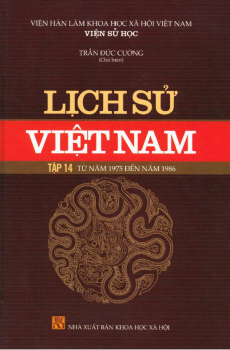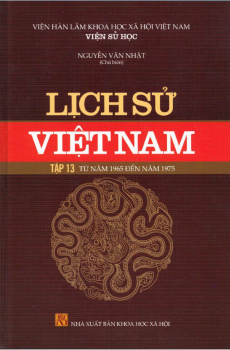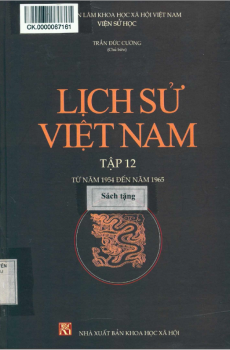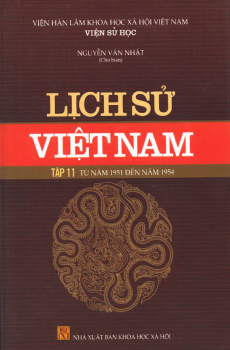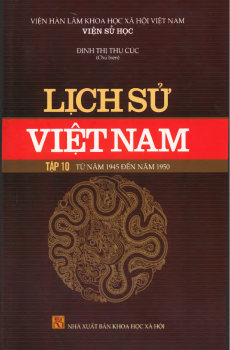History of the United States
History of the United States
Đăng nhập để đọc sách và tải về file pdf miễn phí
| Nhà xuất bản | unknown |
|---|---|
| Nhà xuất bản sách tiếp cận | Public domain |
| Năm xuất bản | 2005 |
| Coppy right | Public Domain |
*** START OF THIS PROJECT GUTENBERG EBOOK HISTORY OF THE UNITED STATES *** Produced by Curtis Weyant, M and the Online Distributed Proofreading Team at pgdp.net HISTORY
OF THE
UNITED STATES
BY
CHARLES A. BEARD
AND
MARY R. BEARD
New York
THE MACMILLAN COMPANY
1921
All rights reserved
Copyright, 1921,
By THE MACMILLAN COMPANY.
Set up and electrotyped. Published March, 1921.
Norwood Press J.S. Cushing Co.—Berwick & Smith Co. Norwood, Mass., U.S.A.
PREFACE
As things now stand, the course of instruction in American history in our public schools embraces three distinct treatments of the subject. Three separate books are used. First, there is the primary book, which is usually a very condensed narrative with emphasis on biographies and anecdotes. Second, there is the advanced text for the seventh or eighth grade, generally speaking, an expansion of the elementary book by the addition of forty or fifty thousand words. Finally, there is the high school manual. This, too, ordinarily follows the beaten path, giving fuller accounts of the same events and characters. To put it bluntly, we do not assume that our children obtain permanent possessions from their study of history in the lower grades. If mathematicians followed the same method, high school texts on algebra and geometry would include the multiplication table and fractions.
There is, of course, a ready answer to the criticism advanced above. It is that teachers have learned from bitter experience how little history their pupils retain as they pass along the regular route. No teacher of history will deny this. Still it is a standing challenge to existing methods of historical instruction. If the study of history cannot be made truly progressive like the study of mathematics, science, and languages, then the historians assume a grave responsibility in adding their subject to the already overloaded curriculum. If the successive historical texts are only enlarged editions of the first text—more facts, more dates, more words—then history deserves most of the sharp criticism which it is receiving from teachers of science, civics, and economics.
In this condition of affairs we find our justification for offering a new high school text in American history. Our first contribution is one of omission. The time-honored stories of exploration and the biographies of heroes are left out. We frankly hold that, if pupils know little or nothing about Columbus, Cortes, Magellan, or Captain John Smith by the time they reach the high school, it is useless to tell the same stories for perhaps the fourth time. It is worse than useless. It is an offense against the teachers of those subjects that are demonstrated to be progressive in character.
In the next place we have omitted all descriptions of battles. Our reasons for this are simple. The strategy of a campaign or of a single battle is a highly technical, and usually a highly controversial, matter about which experts differ widely. In the field of military and naval operations most writers and teachers of history are mere novices. To dispose of Gettysburg or the Wilderness in ten lines or ten pages is equally absurd to the serious student of military affairs. Any one who compares the ordinary textbook account of a single Civil War campaign with the account given by Ropes, for instance, will ask for no further comment. No youth called upon to serve our country in arms would think of turning to a high school manual for information about the art of warfare. The dramatic scene or episode, so useful in arousing the interest of the immature pupil, seems out of place in a book that deliberately appeals to boys and girls on the very threshold of life's serious responsibilities.
It is not upon negative features, however, that we rest our case. It is rather upon constructive features.
First. We have written a topical, not a narrative, history. We have tried to set forth the important aspects, problems, and movements of each period, bringing in the narrative rather by way of illustration.
Second. We have emphasized those historical topics which help to explain how our nation has come to be what it is to-day.
Third. We have dwelt fully upon the social and economic aspects of our history, especially in relation to the politics of each period.
Fourth. We have treated the causes and results of wars, the problems of financing and sustaining armed forces, rather than military strategy. These are the subjects which belong to a history for civilians. These are matters which civilians can understand—matters which they must understand, if they are to play well their part in war and peace.
Fifth. By omitting the period of exploration, we have been able to enlarge the treatment of our own time. We have given special attention to the history of those current questions which must form the subject matter of sound instruction in citizenship.
Sixth. We have borne in mind that America, with all her unique characteristics, is a part of a general civilization. Accordingly we have given diplomacy, foreign affairs, world relations, and the reciprocal influences of nations their appropriate place.
Seventh. We have deliberately aimed at standards of maturity. The study of a mere narrative calls mainly for the use of the memory. We have aimed to stimulate habits of analysis, comparison, association, reflection, and generalization—habits calculated to enlarge as well as inform the mind. We have been at great pains to make our text clear, simple, and direct; but we have earnestly sought to stretch the intellects of our readers—to put them upon their mettle. Most of them will receive the last of their formal instruction in the high school. The world will soon expect maturity from them. Their achievements will depend upon the possession of other powers than memory alone. The effectiveness of their citizenship in our republic will be measured by the excellence of their judgment as well as the fullness of their information.
C.A.B. M.R.B.
New York City, February 8, 1921. A SMALL LIBRARY IN AMERICAN HISTORY
SINGLE VOLUMES: BASSETT, J.S. A Short History of the United States ELSON, H.W. History of the United States of America SERIES: "Epochs of American History," edited by A.B. Hart HART, A.B. Formation of the Union THWAITES, R.G. The Colonies WILSON, WOODROW. Division and Reunion "Riverside Series," edited by W.E. Dodd BECKER, C.L. Beginnings of the American People DODD, W.E. Expansion and Conflict JOHNSON, A. Union and Democracy PAXSON, F.L. The New Nation CONTENTS
PART I. THE COLONIAL PERIOD chapter page I. The Great Migration to America 1 The Agencies of American Colonization 2 The Colonial Peoples 6 The Process of Colonization 12 II. Colonial Agriculture, Industry, and Commerce 20 The Land and the Westward Movement 20 Industrial and Commercial Development 28 III. Social and Political Progress 38 The Leadership of the Churches 39 Schools and Colleges 43 The Colonial Press 46 The Evolution in Political Institutions 48 IV. The Development of Colonial Nationalism 56 Relations with the Indians and the French 57 The Effects of Warfare on the Colonies 61 Colonial Relations with the British Government 64 Summary of Colonial Period 73 PART II. CONFLICT AND INDEPENDENCE V. The New Course in British Imperial Policy 77 George III and His System 77 George III's Ministers and Their Colonial Policies 79 Colonial Resistance Forces Repeal 83 Resumption of British Revenue and Commercial Policies 87 Renewed Resistance in America 90 Retaliation by the British Government 93 From Reform to Revolution in America 95 VI. The American Revolution 99 Resistance and Retaliation 99 American Independence 101 The Establishment of Government and the New Allegiance 108 Military Affairs 116 The Finances of the Revolution 125 The Diplomacy of the Revolution 127 Peace at Last 132 Summary of the Revolutionary Period 135 PART III. FOUNDATIONS OF THE UNION AND NATIONAL POLITICS VII. The Formation of the Constitution 139 The Promise and the Difficulties of America 139 The Calling of a Constitutional Convention 143 The Framing of the Constitution 146 The Struggle over Ratification 157 VIII. The Clash of Political Parties 162 The Men and Measures of the New Government 162 The Rise of Political Parties 168 Foreign Influences and Domestic Politics 171 IX. The Jeffersonian Republicans in Power 186 Republican Principles and Policies 186 The Republicans and the Great West 188 The Republican War for Commercial Independence 193 The Republicans Nationalized 201 The National Decisions of Chief Justice Marshall 208 Summary of Union and National Politics 212 PART IV. THE WEST AND JACKSONIAN DEMOCRACY X. The Farmers beyond the Appalachians 217 Preparation for Western Settlement 217 The Western Migration and New States 221 The Spirit of the Frontier 228 The West and the East Meet 230 XI. Jacksonian Democracy 238 The Democratic Movement in the East 238 The New Democracy Enters the Arena 244 The New Democracy at Washington 250 The Rise of the Whigs 260 The Interaction of American and European Opinion 265 XII. The Middle Border and the Great West 271 The Advance of the Middle Border 271 On to the Pacific—Texas and the Mexican War 276 The Pacific Coast and Utah 284 Summary of Western Development and National Politics 292 PART V. SECTIONAL CONFLICT AND RECONSTRUCTION XIII. The Rise of the Industrial System 295 The Industrial Revolution 296 The Industrial Revolution and National Politics 307 XIV. The Planting System and National Politics 316 Slavery—North and South 316 Slavery in National Politics 324 The Drift of Events toward the Irrepressible Conflict 332 XV. The Civil War and Reconstruction 344 The Southern Confederacy 344 The War Measures of the Federal Government 350 The Results of the Civil War 365 Reconstruction in the South 370 Summary of the Sectional Conflict 375 PART VI. NATIONAL GROWTH AND WORLD POLITICS XVI. The Political and Economic Evolution of the South 379 The South at the Close of the War 379 The Restoration of White Supremacy 382 The Economic Advance of the South 389 XVII. Business Enterprise and the Republican Party 401 Railways and Industry 401 The Supremacy of the Republican Party (1861-1885) 412 The Growth of Opposition to Republican Rule 417 XVIII. The Development of the Great West 425 The Railways as Trail Blazers 425 The Evolution of Grazing and Agriculture 431 Mining and Manufacturing in the West 436 The Admission of New States 440 The Influence of the Far West on National Life 443 XIX. Domestic Issues before the Country(1865-1897) 451 The Currency Question 452 The Protective Tariff and Taxation 459 The Railways and Trusts 460 The Minor Parties and Unrest 462 The Sound Money Battle of 1896 466 Republican Measures and Results 472 XX. America a World Power(1865-1900) 477 American Foreign Relations (1865-1898) 478 Cuba and the Spanish War 485 American Policies in the Philippines and the Orient 497 Summary of National Growth and World Politics 504 PART VII. PROGRESSIVE DEMOCRACY AND THE WORLD WAR XXI. The Evolution of Republican Policies(1901-1913) 507 Foreign Affairs 508 Colonial Administration 515 The Roosevelt Domestic Policies 519 Legislative and Executive Activities 523 The Administration of President Taft 527 Progressive Insurgency and the Election of 1912 530 XXII. The Spirit of Reform in America 536 An Age of Criticism 536 Political Reforms 538 Measures of Economic Reform 546 XXIII. The New Political Democracy 554 The Rise of the Woman Movement 555 The National Struggle for Woman Suffrage 562 XXIV. Industrial Democracy 570 Coöperation between Employers and Employees 571 The Rise and Growth of Organized Labor 575 The Wider Relations of Organized Labor 577 Immigration and Americanization 582 XXV. President Wilson and the World War 588 Domestic Legislation 588 Colonial and Foreign Policies 592 The United States and the European War 596 The United States at War 604 The Settlement at Paris 612 Summary of Democracy and the World War 620 Appendix 627 A Topical Syllabus 645 Index 655



